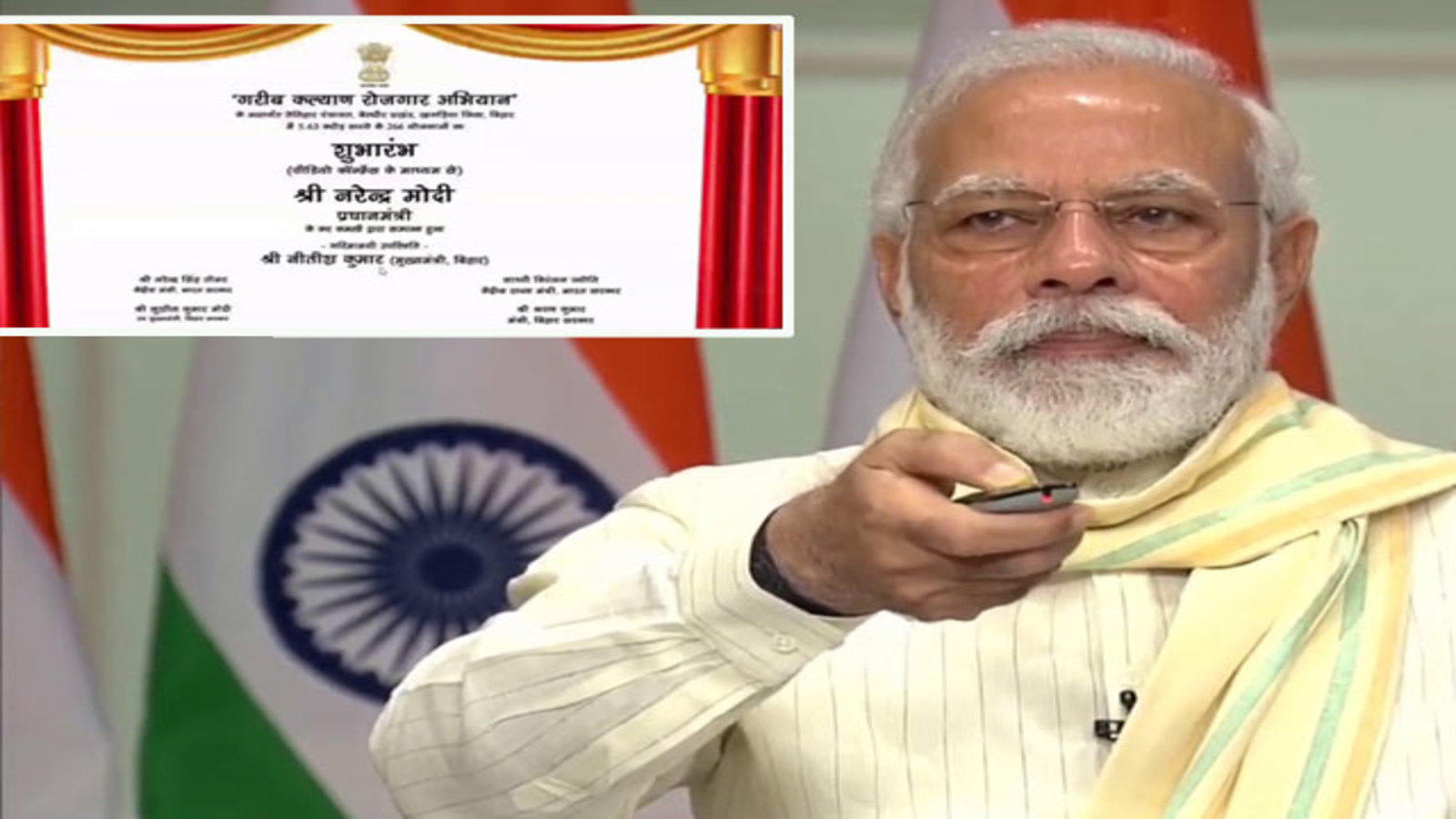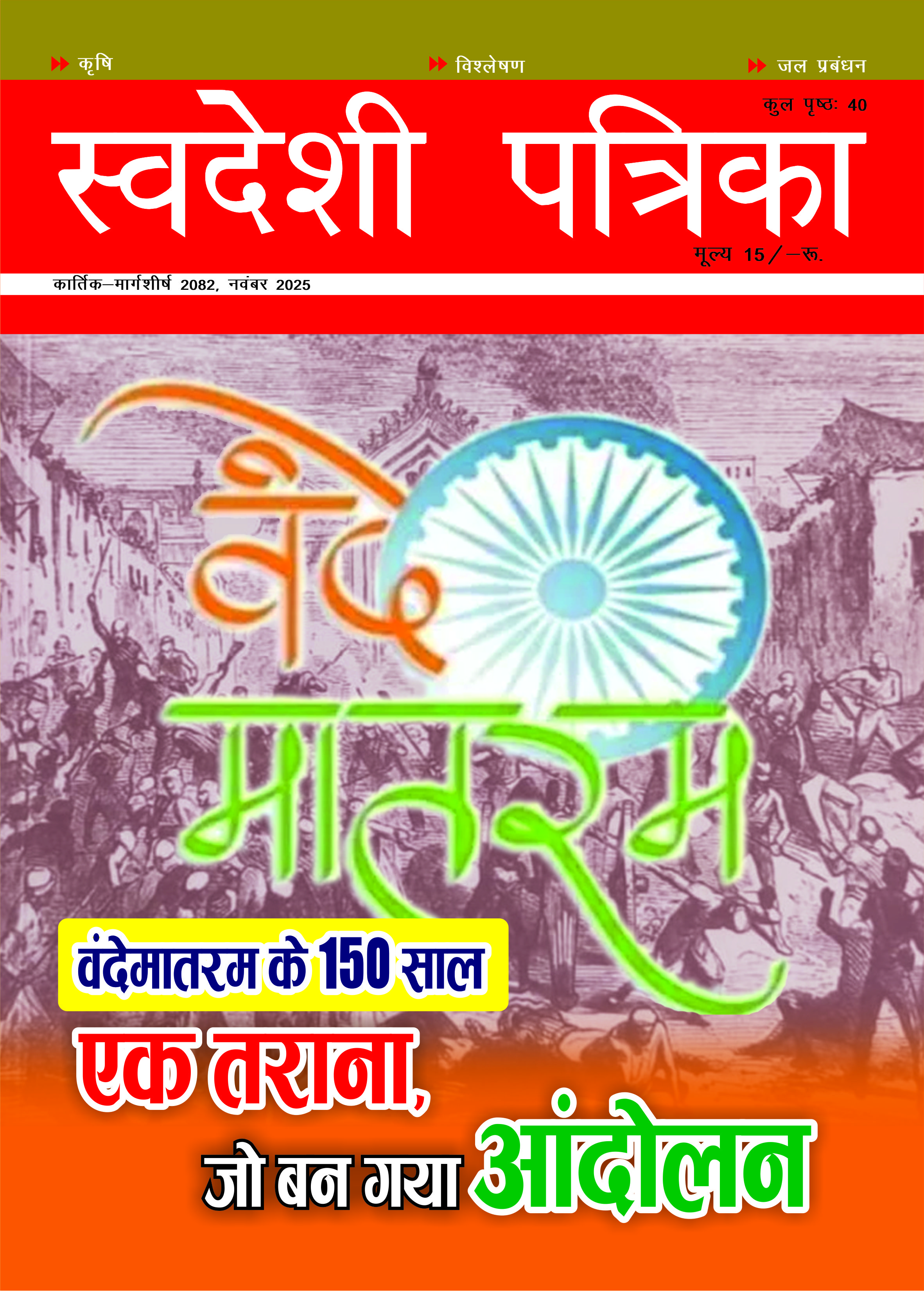
Crisis turned into opportunity
Prime Minister Modi launched a special scheme called Pradhan Mantri Garib Kalyan Rozgar Abhiyan on June 20, 2020. The campaign was launched to help migrant laborers who returned to their villages, and provide them employment opportunities. This campaign was carried out in mission mode in 116 districts of the 6 states most affected by the return of migrant laborers and it was targeted to spend an amount of Rs. 50 thousand crores in this program. In this campaign, 25 types of works were selected prominently. The implementation of this campaign was linked with 12 government departments/ministries, including Rural Development, Panchayati Raj, Road Transport, Railways, Ministry of Defense, Department of Telecommunications, Department of New and Renewable Energy, Ministry of Petroleum and Natural Gas, Ministry of Mining. According to a press release by the government, 1.37 lakh water conservation structures, 4.31 lakh rural houses, 38,287 thousand animal sheds, 26.5 thousand ponds, 18 thousand sanitisation complexes were constructed, in addition to internet facility in 2,123 gram panchayats, and many other works were completed during 16 weeks of this program. This work was completed by providing employment for 33 crore labor days, while Rs. 33,114 crore were spent on this scheme.
Significantly, during the Corona period, due to the lockdown, unemployed laborers returned to their native villages. They naturally needed government support due to their economic woes. In such a situation, the government implemented a plan to provide 10 kg of grain every month to 80 crore people for at least 6 months, but gainful employment for the laborers reached in the villages still remained a challenge.
Meanwhile, the government had gathered detailed information about the laborers who reached their villages through the railway department, quarantine centers and other means. With the government having knowledge of their skills and occupations, it was thought that by providing gainful employment to migrant workers near their villages, the development of villages can also be accelerated. In fact, the government launched the Prime Minister's Garib Kalyan Rozgar Abhiyan with the objective of turning the situation of the Corona pandemic into an opportunity.
A large number of schemes have been included in the Pradhan Mantri Garib Kalyan Rozgar Abhiyan and 12 Ministries/Departments have been included with it. All skilled and unskilled laborers were included in the Pradhan Mantri Garib Kalyan Rozgar Abhiyan. Various types of work were included in this scheme. Rural houses, ponds, solar plants, community sanitation complexes, gram panchayat buildings, national highways, water conservation and irrigation, anganwadi centers, village road plans and internet connectivity was included in the scheme. Shyama Prasad Mukherjee Rurban Mission, was A wide variety of skills have been used in this and different types of departments and ministries have been coordinating in this work. Shyama Prasad Mukherjee Rurban Mission has been associated with this program.
Since independence, till date governments have never thought of an all-round development of villages. Rather, from the beginning most of our economists kept saying that the experience of economic development around the world has been that development could be possible only through urbanization. They kept saying that the chances of increasing productivity in agriculture are extremely low; Therefore, if the villagers are brought to the cities and settled, then economic development can be accelerated by putting them in more productive occupations.
For these economists, industrialization is necessary for rapid economic development in the country, but this does not mean that we don’t make efforts for overall development of villages or improvement in the lives of the rural people. Even today, where only 30 percent of the population lives in the city; schools, colleges, universities, big hospitals, and all the entertainment facilities are all concentrated there. The villages where 70 per cent of the people live do not have sufficient facilities for education, health, drinking water, sanitation; and means of employment are generally lacking. In 2014, 63 per cent agricultural land was still rain fed.
Former President APJ Abdul Kalam had conceptualized this idea of ‘Provision of Urban Amanities in Rural Areas’ (PURA). This concept should ideally be the mantra of rural development in India. It was proposed by PURA that all services including infrastructure and education and health, should be made available in rural areas. This will not only improve the lives in the villages, but will also increase the income and employment in the villages. In the concept of PURA, villages should have good roads, drinking water, health facilities, educational and technology institutes etc. From the year 2004, this scheme continued to run half heartedly. Shyama Prasad Mukherjee Ruraban Mission, which started from the year 2016, is an improved version of the same scheme.
Though initially the Prime Minister Garib Kalyan Rojgar Abhiyan has been implemented with a view to providing employment to migrant laborers for only 125 days and its 16-week report card has also been published, but the unprecedented success of this campaign and in view of the changes coming in the rural areas, this campaign not only needs to continue further, but it needs to be taken to all the districts of the country with a view to all round development of villages. Through this, facilities should be created for employment and income generation in villages including dairy, animal husbandry, poultry, fisheries, bamboo production, food processing etc. With this, not only APJ Abdul Kalam's dream of PURA will be fulfilled, but the employment and income generation in villages will also be implemented. With this, Rural-Urban inequalities will reduce and migration of laborers to cities will also come down.


